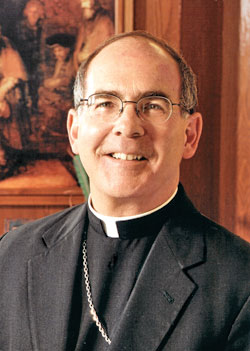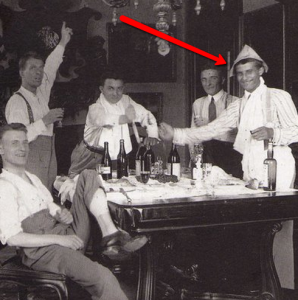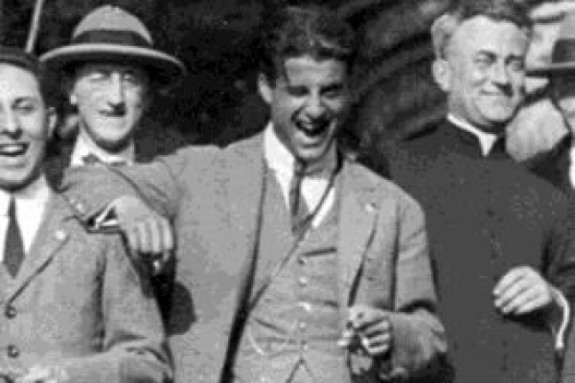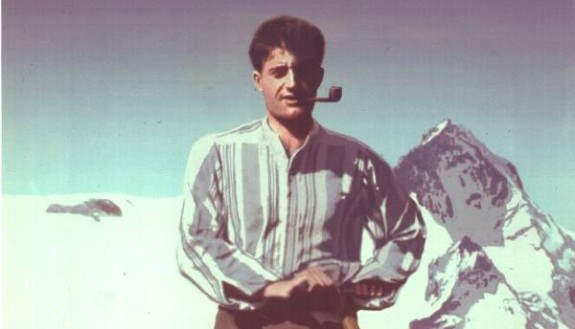I recently had dinner with Archbishop Peter Sartain, the affable leader of Seattle’s Catholic community. Quickly I learned why so many churchman admire him. After an exchange of greetings, the first thing he did was hand me a second-class relic of Bl. Pier Giorgio Frassati, my favorite saint. That launched a long conversation about the man Pope John Paul II christened “the man of the beatitudes,” to whom I and Archbishop Sartain both have a strong devotion.
Through dinner I learned that Archbishop Sartain is one of the world’s leading Pier Giorgio experts. He has read almost all the relevant literature, in both English and Italian, and is close friends with Pier Giorgio’s surviving family. The archbishop also frequents Turin, Italy, where Pier Giorgio lived and died.
On this his feast day, the fourth of July, Archbishop Sartain agreed to chat with me more about Pier Giorgio’s impact, his love for the poor, and some recommended books on the young saint.
BRANDON VOGT: What first drew you to Pier Giorgio Frassati and how has he impacted your life?
 ARCHBISHOP SARTAIN: I was first introduced to Pier Giorgio when I was a seminarian in Rome in the mid-1970’s. The quickest route from the seminary to St. Peter’s Basilica took you along the Via Pfeiffer, on which the 12th century church, San Lorenzo in Piscibus, is located. The church is named “in Piscibus” because many years ago the fish market was nearby!
ARCHBISHOP SARTAIN: I was first introduced to Pier Giorgio when I was a seminarian in Rome in the mid-1970’s. The quickest route from the seminary to St. Peter’s Basilica took you along the Via Pfeiffer, on which the 12th century church, San Lorenzo in Piscibus, is located. The church is named “in Piscibus” because many years ago the fish market was nearby!
I passed that way frequently, but the church was always locked. One day, however, I found it open and noticed that many young adults my own age were going inside, so I followed them. It turned out that the church was hosting an exhibition on the life of Pier Giorgio, who at that time had not yet been beatified. I was impressed and inspired by his story, told in words and pictures in the beautiful exhibit. As a young man about his age, I was moved by his extraordinary life, and how at such a young age he integrated his deep love for God, a profound life of prayer, an active life of sports, leadership in various Catholic groups, his love and service of the poor, and his treasuring of good friendships.
I remember leaving the church and going immediately to a nearby bookstore to buy as many books as I could about his life. The more I got to know him, the more I wanted to imitate him, and the more I wanted to tell others about him.
After I was ordained and returned to the States, I kept up with the cause for his canonization, and during several return trips to Rome I discovered some interesting magazine articles about the progress of his cause. As a young priest, I found many things in his life to imitate and knew that young people would find him to be a great example. When I was pastor of St. Louis Church in Memphis, I inaugurated a “Frassati Society” in response to a group of young adults who approached me about creating new outreach to their generation. The Frassati Society was a great success—we met every Sunday evening. We spent time in prayer, always had some catechetical input, enjoyed some social time, planned service projects and retreats—and always ended our evening with prayer before the Blessed Sacrament in Church.
Since my first encounter with Pier Giorgio in the mid-70’s, I have thought of him as a friend, and he continues to be an example and important intercessor for me. I still enjoy telling his story to anyone who will listen!
BRANDON VOGT: Pier Giorgio’s life was full of wonderful anecdotes. Which is your favorite?
ARCHBISHOP SARTAIN: There are many favorites! One occurred just four nights before he died. He had been reading Johannes Jorgensen’s recently-published Life of St. Catherine of Siena. Frassati was already ill with the acute case of poliomyelitis that would soon cause his death, though he did not know it, and during a visit with two close friends, he excitedly read passages from the book. One passage recounted the day that St. Catherine, praying the Office as she walked back and forth inside a church, had the sense that someone was walking with her—and realized it was Jesus! Here’s what Jorgensen writes:
“Like two young ecclesiastics saying their office together, the Saviour and Catherine walked up and down the brick floor of the chapel…and when, at the end of each psalm, she had to say the doxology: “Glory be to the Father and to the Son,” etc., she altered the words and making a deep reverence towards the Lord, said in a trembling voice: “Glory be to the Father and to Thee and to the Holy Ghost. As it was in the beginning, is now and ever shall be, world without end, Amen.”
Pier Giorgio was understandably captivated by Catherine’s closeness to Christ and the fact that Christ showed himself so clearly to her. After a moment of silence, he turned to his friend Massetti and, with a seriousness that perplexed his friend, said, “See, St. Catherine already had in life the gift of seeing Jesus.” And after another pause, he added, “but we have to wait until we go to Paradise.”
I love that passage myself, because it showed how much he longed to see Jesus—how Jesus for him was Everything—and how he was about to be called to eternal life by Jesus, in just four days.
BRANDON VOGT: Like all saints, Pier Giorgio understood the deep congruence between the corporal and spiritual works of mercy. How did his faith and his charity flow into each other?
ARCHBISHOP SARTAIN: You’re right. I don’t think Pier Giorgio made any distinctions in his life between faith, prayer, mountain climbing, friendships, and active love—for him, they were all of a piece, all a part of being a disciple of Jesus.
Most of all, he could not conceive of a life that did not include faith and deep prayer. He loved the poor intensely and saw Jesus in them—from prayer Jesus sent Pier Giorgio to them, and in them he met Jesus. This kind of spiritual maturity was extraordinary—it’s something I aspire to.
BRANDON VOGT: Pier Giorgio’s cause for canonization hit a few early snags when people chafed at his pipe smoking and partying. What should we make of these activities?
 ARCHBISHOP SARTAIN: Honestly, I don’t think we should make anything of them other than see in them a young man like us who led a full life and made his spiritual life the integrating factor of everything.
ARCHBISHOP SARTAIN: Honestly, I don’t think we should make anything of them other than see in them a young man like us who led a full life and made his spiritual life the integrating factor of everything.
As for “partying,” he knew how to enjoy life and desired to help others enjoy life, too. We have to be leery of thinking of his “partying” in 21st century terms. Here we’re talking about the way he enjoyed social time with his friends. He was a jokester and wanted others to enjoy themselves. He wanted to encourage their friendship because he knew that true, faith-filled friendship is a gift of God. He also knew that joy is a sure sign of a person in love with God.
BRANDON VOGT: On May 20, 1990, Pope John Paul II beatified Pier Giorgio and described him as “a man of the beatitudes.” Why this title?
ARCHBISHOP SARTAIN: During his homily on that occasion, Blessed John Paul said:
“Entirely immersed in the mystery of God and totally dedicated to the constant service of his neighbor, he is a man of the eight beatitudes. Thus we can sum up his earthly life.”
Back in 1983, when Blessed John Paul inaugurated the San Lorenzo International Youth Centre (yes, in the same San Lorenzo Church where I had first met Pier Giorgio!) he said:
“Together with the memory of the ancient cross of San Damiano and the example of St. Francis, I want to recall to you as an incentive for striving toward high ideals also the figure of a young man who lived in our era, Pier Giorgio Frassati. He was a “modern” youth open to the problems of culture, sports, to social questions, to the true values of life, and at the same time a profoundly believing man, nourished by the Gospel message, deeply interested in serving his brothers and sisters and consumed in an ardour of charity that drew him close to the poor and the sick. He lived the Gospel Beatitudes.”
BRANDON VOGT: You’ve read almost all the literature on Pier Giorgio, in multiple languages. What would you recommend to a beginner who is looking for an introduction to Pier Giorgio?
ARCHBISHOP SARTAIN: The best introduction to Pier Giorgio’s life are two books by his sister, Luciana Frassati: A Man of the Beatitudes: Pier Giorgio Frassati (Ignatius, 2001) and My Brother Pier Giorgio: His Last Days (New Hope Publications, 2002). These two beautiful books, written by one who knew him best, give an intimate glimpse into his personality, family life, spirituality, and impact.


